Lowe’s: VR, the Future of Retail

As brick and mortar retailers face increasing competition from online platforms, VR/AR provide a means to fight back and reengage consumers
Retail, an ever-evolving industry, is once again in flux.
With the advent of VR and AR technology, Retailers are again asking themselves how to best capture the eyes and wallets of targeted consumers. Consumers are no longer shopping simply for ease of convenience, often driving them online, but many are looking for an experience, even better an interactive experience, while they shop. Research from Sonar, J. Walter Thompson’s proprietary research unit, shows that consumers, especially those age 13-17 of Generation Z, are “expectant of the experiential nature of stores… 79% are more likely to visit stores that offer interactive experiences that help customize products.”[i] Additionally, 72% of U.S. millennial consumers surveyed by Sonar “believe that as [AI] technology develops, brands using AI will be able to accurately predict what they want,”[ii] which consumers see as beneficial.
Lowe’s, similar to other big-name retailers such as Macy’s and Kohl’s, has been hurt financially as consumers continue to shop more and more online.[iii] To combat actions such as showrooming, the act of checking out items in a physical store before buying them online[iv], brick and mortar retailers have taken great strides towards creating an omnichannel experience to engage consumers both in stores and in their own online platforms.
In 2014, the Lowe’s Innovation Labs launched the Holoroom, “a virtual reality home improvement design and visualization tool that empowers homeowners with an immersive, intuitive experience in the room of their dreams.”[v]
Source[vi]
Creating Value:
As Lowe’s proudly states on their website. “Visualizing a home improvement project is hard – the Holoroom is here to help.”[vii]
The Holoroom enables consumers to take an idea for a DIY project and turn it into a reality. Wearing Oculus HMD goggles, a consumer is able to design a room while the Lowe’s team member adjusts paint colors, counter top and cabinet finishes, appliances and fixtures etc. into the perfect room. Given the stress many consumers face regarding a DIY project, the Holoroom helps reduce the concern that design decisions will clash or rooms will not meet the consumer’s vision. Additionally, all the items utilized in the visualization are available for purchase in one easy and combined location through Lowe’s.
Source[viii]
Capturing Value:
As Forbes shared in its article on AI and VR as the future of retail, “[VR enables you to] bring the catalogue and rooms to life. Putting people in the center of environments makes e-commerce more immersive, and will have a big impact on selling bigger items like furniture, as it will give them confidence to purchase.”[ix]
Though Lowe’s has not disclosed whether the introduction of Holoroom has driven increased sales to its brick and mortar stores, it has shared that “the technology has driven interest and traffic to its stores,”[x] an essential first step towards returning sales from online platforms.
Once the consumer has finished designing the perfect room, a Lowe’s customer service representative exports the project to YouTube 360 and provides the consumer with a Lowe’s branded Google Cardboard through which the project can be viewed at home.[xi] This ensures the consumer has the ability to replicate the DIY project at home and keeps the Lowe’s brand top of mind for any additions to the project or future DIY projects.
Source[xii]
Recommendations for the Future:
Lowe’s has already recognized the significant amount of opportunity VR/AR can drive for the retail industry. The success of Holoroom has pushed Lowe’s Innovation Labs to invest additional R&D into VR projects resulting in the more recent launches of Holoroom How To, HoloLens, Lowe’s Vision, LoweBot, and more.[xiii] Each new technology further connects the consumer to the great resources, products, and services provided by Lowe’s. From educating on the how to of DIY projects with Holoroom How To, to helping consumers measure a room and design it with Lowe’s products from the comfort of their own home through Lowe’s vision, VR/AR technology is helping Lowe’s to further fulfill its slogan “Improving Home Improvement.”
Source Lowe’s Vision[xiv]
Source Holoroom How To[xv]
Challenges:
One of the risks I believe Lowe’s faces is ensuring the consumer does not become overwhelmed or discouraged by the plethora of technology available. Additionally, as VR becomes a reality in consumer’s homes, Lowe’s will need to ensure the software of Holoroom and Holoroom How To is easily accessible for all types of HMD from the comfort of the consumer’s home. Though such shifts will again drive traffic away from brick and mortar stores, Lowe’s Innovation Labs technology will ensure Lowe’s stays top of mind for the consumer when it comes to their next DIY project.
______________________________________________________________________________________
[i] Arthur, Rachel. “Future of Retail: Artificial Intelligence and Virtual Reality Have Big Roles To Play.” Forbes. June 2016. https://www.forbes.com/sites/rachelarthur/2016/06/15/future-of-retail-artificial-intelligence-and-virtual-reality-have-big-roles-to-play/#72302c507f9d
[ii] Arthur, Rachel. “Future of Retail: Artificial Intelligence and Virtual Reality Have Big Roles To Play.” Forbes. June 2016. https://www.forbes.com/sites/rachelarthur/2016/06/15/future-of-retail-artificial-intelligence-and-virtual-reality-have-big-roles-to-play/#72302c507f9d
[iii] Vanian, Jonathan. “Lowe’s Wants People to Fix Their Bathrooms in Virtual Reality.” Fortune. March 2017. http://fortune.com/2017/03/07/lowes-virtual-reality-home/
[iv] Craig, Emory. “Using AR in Retail – Amazon Explores Augmented Reality.” Digital Bodies. March 2017. https://www.digitalbodies.net/augmented-reality/using-ar-in-retail-amazon-explores-augmented-reality/
[v] http://www.lowesinnovationlabs.com/holoroom/
[vi] https://youtu.be/DVsEb9vla-I
[vii] http://www.lowesinnovationlabs.com/holoroom/
[viii] http://www.lowesinnovationlabs.com/holoroom
[ix] Arthur, Rachel. “Future of Retail: Artificial Intelligence and Virtual Reality Have Big Roles To Play.” Forbes. June 2016. https://www.forbes.com/sites/rachelarthur/2016/06/15/future-of-retail-artificial-intelligence-and-virtual-reality-have-big-roles-to-play/#72302c507f9d
[x] Vanian, Jonathan. “Lowe’s Wants People to Fix Their Bathrooms in Virtual Reality.” Fortune. March 2017. http://fortune.com/2017/03/07/lowes-virtual-reality-home/
[xi] Ion, Florence. “Lowe’s Holoroom lets you preview a home remodel in virtual reality.” TechHive. January 2016. http://www.techhive.com/article/3020154/ces/lowes-holoroom-lets-you-preview-a-home-remodel-in-virtual-reality.html
[xii] http://www.lowesinnovationlabs.com/holoroom
[xiii] http://www.lowesinnovationlabs.com/visualization
[xiv] http://www.lowesinnovationlabs.com/tango
[xv] http://www.lowesinnovationlabs.com/holoroomhowto



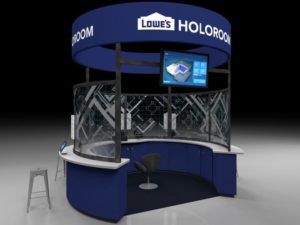
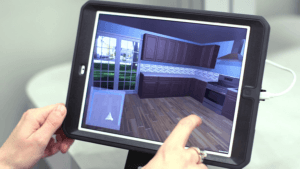
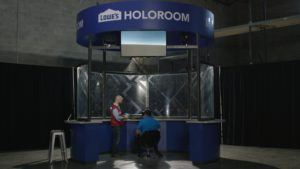
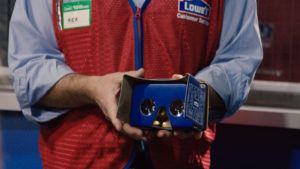
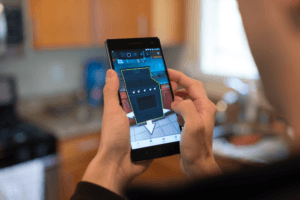
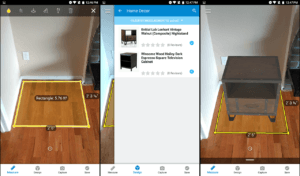

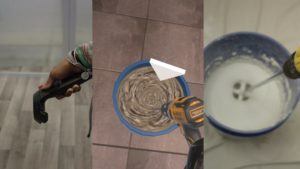
Great post! I wonder if there’s a disconnect here between the type of customer that cares about DIY home projects and early adopters of VR technology. While I certainly agree that experiential and interactive retail experiences are becoming more important, the 13-17 year old demographic that you mention may not be the primary user of Lowe’s VR content. Further, Lowe’s isn’t a brand that you necessarily associate with high brand engagement and high levels of experiential interactions. As one of the first use cases of retail VR, Lowe’s would certainly not be at the top of my list – even though the DIY home project space certainly makes sense for VR, I think the customer mismatch and current brand equity might be detractors.
Yezi – thank you for your comment! I completely agree that the 13-17 year old is not Lowe’s current target demographic. For this reason, all of their current use of VR is actually in the Brick & Mortar stores including the Holoroom and the Holoroom How To. The primary at home innovation is the Lowe’s Vision which utilizes AR technology instead.
Given that clarification, I actually think the biggest hurdle for Lowe’s will be to ensure their target demographic knows about these innovations within the store and attracts customers to use technology that they might otherwise be unfamiliar with. Given the high level of customer service engagement in the DYI space, I would push back on your comment that Lowe’s brand is not associated with high brand engagement or experiential interactions – I just expect that as non home owners, we are currently not the target demographic for Lowe’s brand. That said, I’ll be curious to see what type of marketing I receive whenever I purchase a home in the future and whether Lowe’s does successfully advertise its use of AR/VR technology to make my DYI projects easier.
Very interesting post! I agree that this is a great differentiation strategy for an established retailer like Lowe’s. In order to increase the reach of this technology, I wonder if Lowe’s should seek to build partnership with one of the device manufacturers. While there is already a plethora of hardware manufacturers of AR/VR headsets, content creation seems to lag behind. Lowe’s can truly capitalize on its technology if it somehow becomes part of the default content in these headsets.
Oyku – interesting proposition! I think one of the values of having Lowe’s Holoroom technology located in the Brick & Mortar stores currently is that a customer service representative is able to assist the customer as he/she builds their dream room. If Lowe’s was able to successfully partner with a VR Headset manufacturer for at home use of the technology, they would need to ensure the experience was as easy as possible to design the room without a customer service representative – otherwise I think the technology would receive negative reviews very quickly and would lose a lot of the appeal it has built thus far in the stores. This is definitely a challenge they will need to tackle if they want to stay relevant when VR grows in their target customer segments.
Great post, Megan! Similar to Oyku, I have another partnership idea. I’m wondering what you think about partnering with another retailer – specifically Wayfair. I know Wayfair is also embracing AR in a similar way to Lowes by allowing customers to drop a virtual piece of furniture into their space to test whether it would work. Given that Lowes is trying to help customers visualize an end product, adding furniture to its offering could be more compelling for customers. I think there is very little overlap between Wayfair and Lowes products so there likely wouldn’t be a competitive issue. Furthermore, given that Wayfair is largely e-commerce vs. brick and mortar, there could be synergies in co-promoting in-store visits.
Christy – love the idea! I did a quick search of both Lowe’s and Wayfair’s websites and it looks like the greatest overlap is in Patio Furniture and general decor items. Lowe’s features decor and accessories on its website but does not appear to actually sell furniture items like couches and chairs – if Wayfair was willing to be a supplement for Lowe’s missing items, I think they could form a great partnership. The challenge will be as you said, the question of whether competing items become a challenge. I expect if Lowe’s saw a reduction in the online purchase of such accessories or decor items without a gain in other areas, they would be less excited/willing to continue a partnership long term. Definitely an interesting proposition though!
Thanks for the post, Megan! It seems like many retailers are doing similar things – Ikea, for example, launched a VR experience for customers to visualize kitchen furniture/installations. Right now, these VR experiences seem more like a novelty feature or attraction, often just to drive foot traffic to the stores or as a PR tool. I suspect that until VR is commonplace – used with owned hardware, in our homes – it will be difficult for retailers to integrate into shopping experiences and see a real ROI.
Great post! It is clear that this VR use case makes a lot of sense for Lowe’s business and certainly will help drive traffic to stores, yet it will be interesting to know how consumers desire to adopt it – do they prefer to sit at home and experience it and make potential purchases all online, or it is equally important for them to touch and feel the stuff Lowe’s are selling. If the former is true, or partially true, then what Lowe’s is doing is probably not enough. I guess in addition to the challenges you have already mentioned, a overarching question that Lowe’s needs to answer is how omni channel strategy should play out in its specific case.